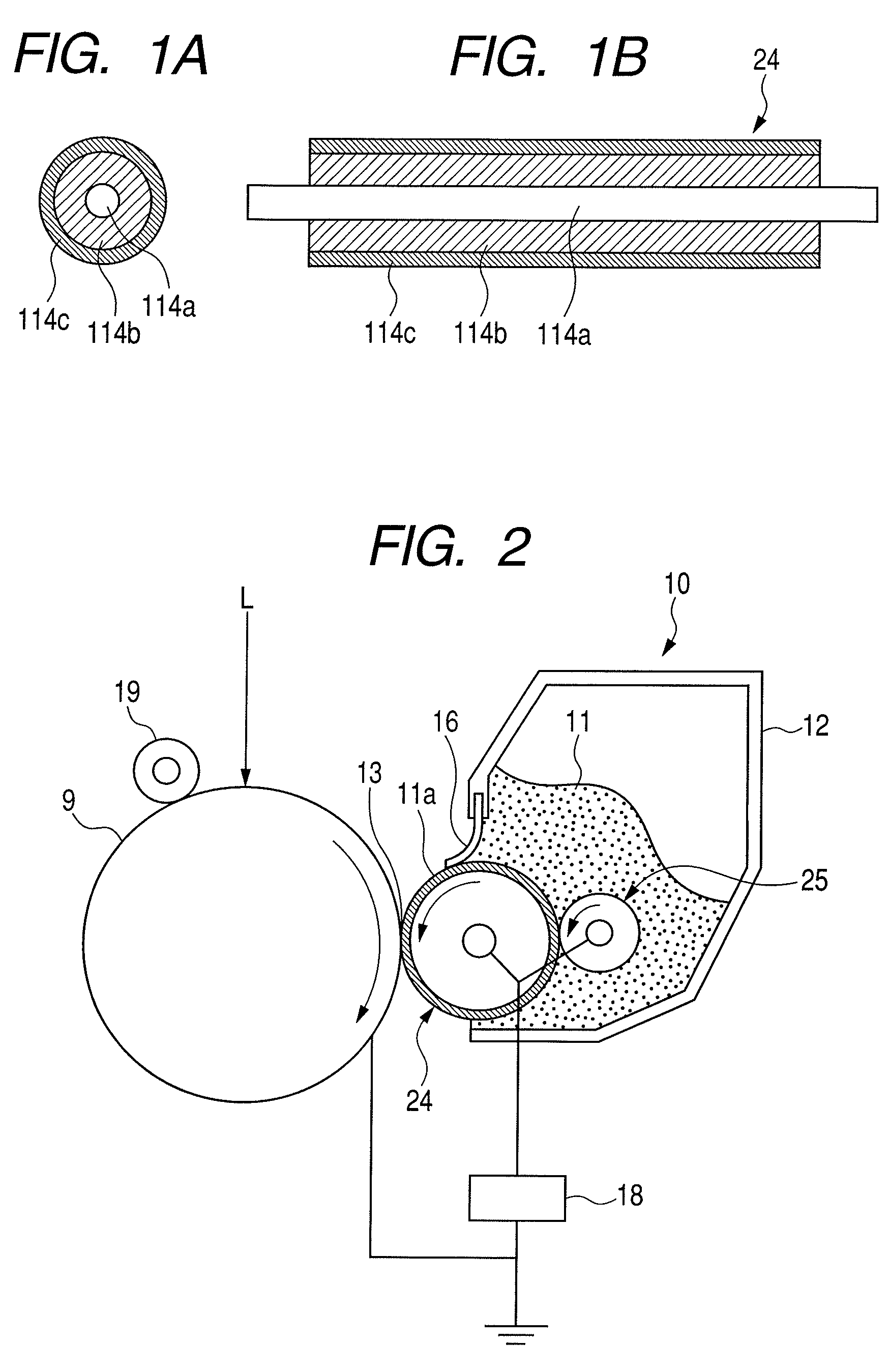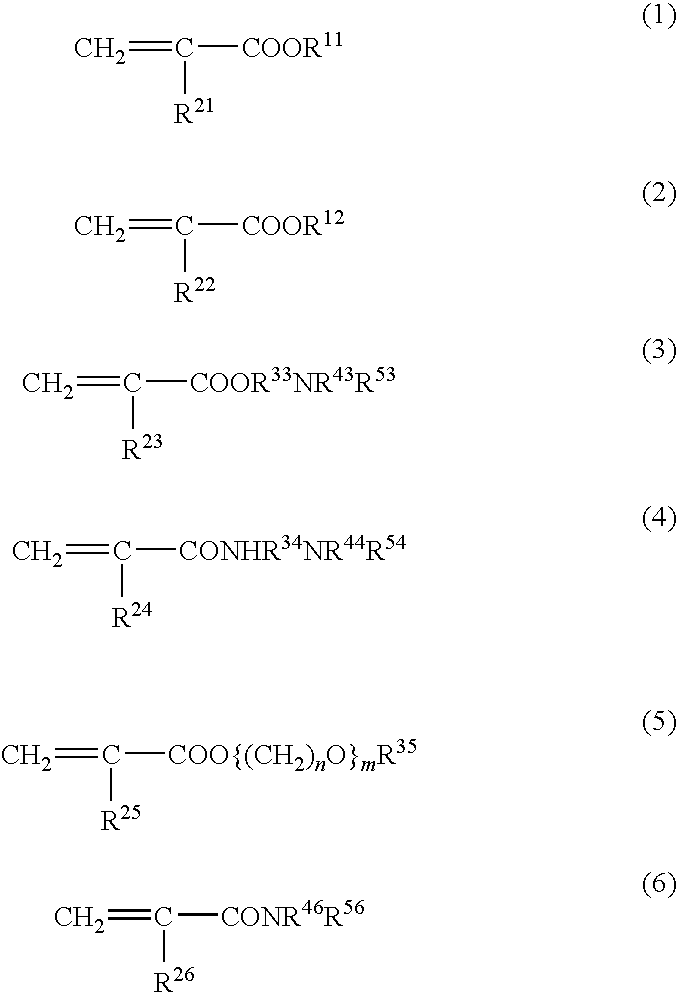Copolymer, resin for electrophotographic functional component parts, developing roller, and electrophotographic apparatus
a technology of functional components and copolymers, applied in the direction of electrographic processes, instruments, coatings, etc., can solve the problems of affecting the characteristics of components, affecting the quality of components, so as to promote a urethanation reaction and prevent any bleed-out
- Summary
- Abstract
- Description
- Claims
- Application Information
AI Technical Summary
Benefits of technology
Problems solved by technology
Method used
Image
Examples
example 1
Production of Copolymer 1
[0081]The following monomers were used.
2-Ethylhexyl methacrylate (A1) as a (meth)acrylate monomer: 10 g.
N,N-dimethylaminoethyl methacrylate (B1) as an amino group-containing monomer: 30 g.
Methoxypolyethylene glycol monomethacrylate (C1) as a polar group-containing monomer: 10 g.
[0082]The above monomers and 37.5 g of toluene and 12.5 g of ethanol, as solvents, and 2.0 g of 2,2′-azobis-(2-methyl propionate), as a polymerization initiator, were introduced into a four-necked separable flask provided with a stirrer, a condenser, a thermometer, and a nitrogen feed pipe. These were stirred at 80° C. for 8 hours in a stream of nitrogen to carry out solution polymerization. Thereafter, the product obtained was dried under reduced pressure to obtain Copolymer 1.
[0083]The amine value, mass average molecular weight (Mw), and Tg of the obtained Copolymer 1 were measured in the following way. The results are shown in Table 1 below.
[0084]The amine value was measured with a...
example 11
Production of Urethane Resin
[0089]FA-703 (trade name; available from Sanyo Chemical Industries, Ltd.) as a polyol component and COLONATE 1021 (trade name; available from Nippon Polyurethane Industry Co., Ltd.) as an isocyanate component were used in a total amount of 10 g such that the hydroxyl group in the polyol component and the isocyanate in the isocyanate component have equivalent weights. To these, 10% by mass of MEK (methyl ethyl ketone) and 0.3 g of Copolymer 1, obtained in Example 1, were added to prepare a sample solution. This sample solution was poured into a laboratory dish made of TEFLON and left to stand at room temperature for 5 hours to evaporate MEK, followed by heating at 60° C. for 30 minutes to prepare a urethane resin test piece.
[0090]The tackiness of the test piece was measured with Tackiness Tester TAC-II (trade name; manufactured by Rhesca Company Limited). The measurement was performed in an environment of N / N (normal temperature / normal humidity: 22° C., 55...
example 16
[0092]A urethane resin test piece was prepared in the same manner as in Example 13, except that MEK was not used. Its tackiness was measured in the same manner. The results are shown in Table 2.
PUM
| Property | Measurement | Unit |
|---|---|---|
| Tg | aaaaa | aaaaa |
| Tg | aaaaa | aaaaa |
| Tg | aaaaa | aaaaa |
Abstract
Description
Claims
Application Information
 Login to View More
Login to View More - R&D
- Intellectual Property
- Life Sciences
- Materials
- Tech Scout
- Unparalleled Data Quality
- Higher Quality Content
- 60% Fewer Hallucinations
Browse by: Latest US Patents, China's latest patents, Technical Efficacy Thesaurus, Application Domain, Technology Topic, Popular Technical Reports.
© 2025 PatSnap. All rights reserved.Legal|Privacy policy|Modern Slavery Act Transparency Statement|Sitemap|About US| Contact US: help@patsnap.com



